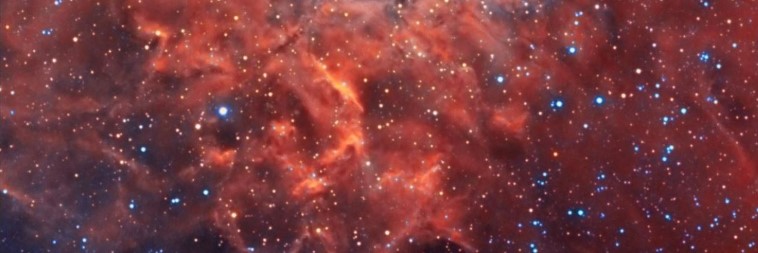Flaming Star Nebula

At the end of the 19th century, in the constellation Auriga, John Martin Schaeberle discovered the beautiful nebula IC 405.
John Martin Schaeberle (1853-1924) was an American astronomer from the Kingdom of Württemberg. The same nebula was discovered, independently of each other by Max Wolff and Eugen von Gotthard.
Obviously, there was no internet, so something like that was not only possible, but a frequent occurrence that you discover something, only to find out after a few months that someone else has already recorded it somewhere already.
This IC in the nebula designation is an acronym for Index Catalogs, which is again an addition to the NGC (New General Catalogue), and 405 is the number under which this nebula is recorded.
However, such labels, as much as they are necessary, are also unimaginative and difficult to remember, so many objects, especially if they are visually attractive, have their own names.
This nebula, IC 405, is therefore much better known as the Flaming Star Nebula. It is illuminated by the unusual variable star AE Aurigae.
The nebula in our sky occupies a space 37′ by 19′ in diameter, is 1,500 light years away, and the light we see today came from it at the beginning of the Middle Ages.

The nebula we are talking about is accessible to amateur telescopes, even those of modest performance, with a 2.4-inch telescope, because its brightness is about 6 m (which is normally visible to the naked eye).
It is a combination of emission and reflection nebula.
But that’s how it is today, with modern optics. At the time when the nebula was discovered, astronomers had to work really hard to spot it. Of course, to observe IC 405, you need to choose a dark observation site and a clear sky.
Otherwise, when you’re already at IC 405, look for AE Aurigae as well. You will notice it as the brightest star within the nebula.
It is an extremely hot star whose magnitude varies from 5.4 to 6.1, which is not particularly noticeable, but the star is interesting because of the speed of its movement through space (which, of course, you will not notice).
About two million years ago, it was thrown into space at a tremendous speed by a collision of two binary systems. AE Aurigae is currently zooming past IC 405 and illuminating its gas. But when one day she moves on, then this nebula will fade.

